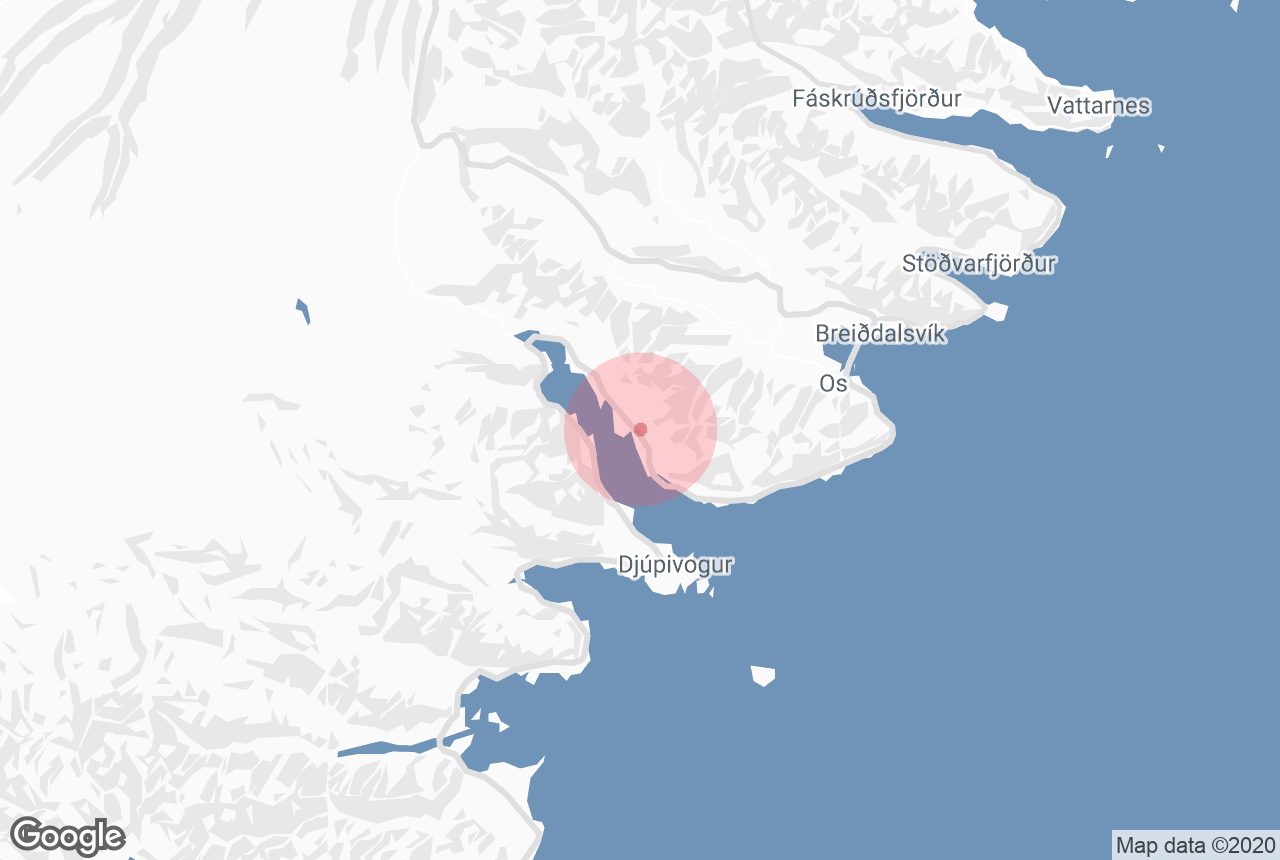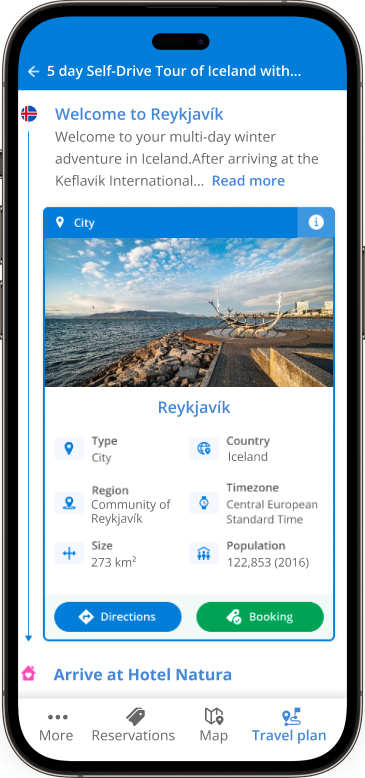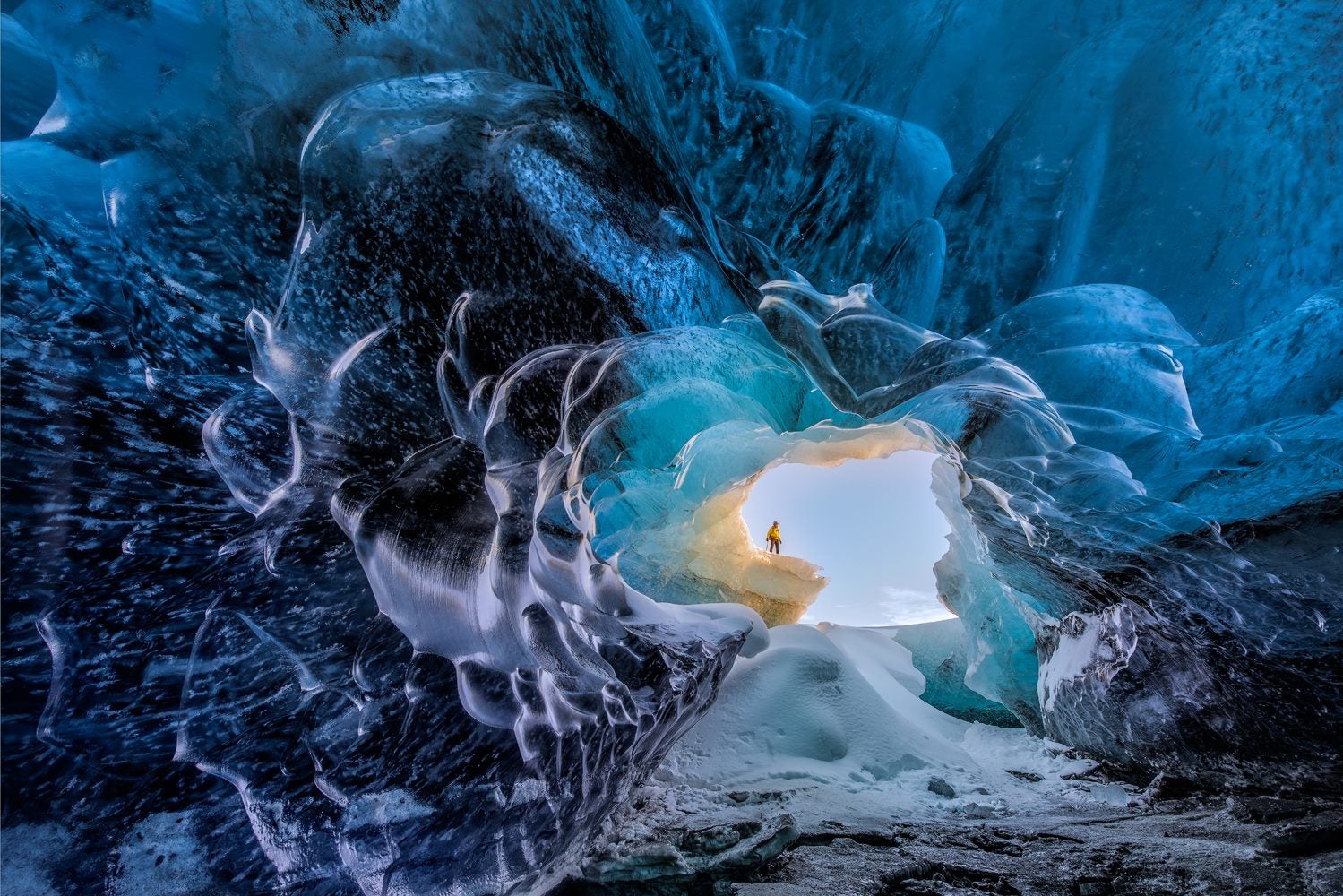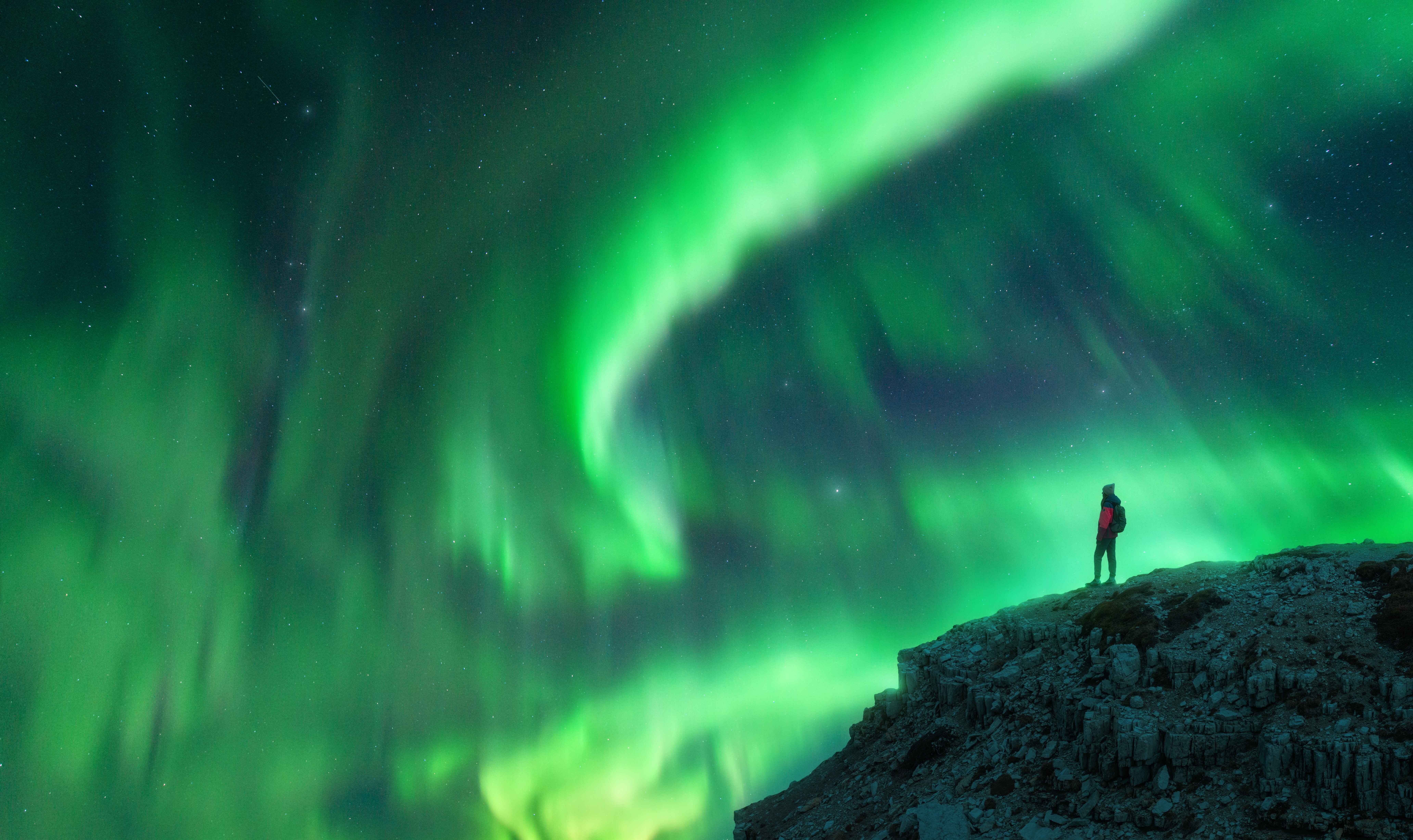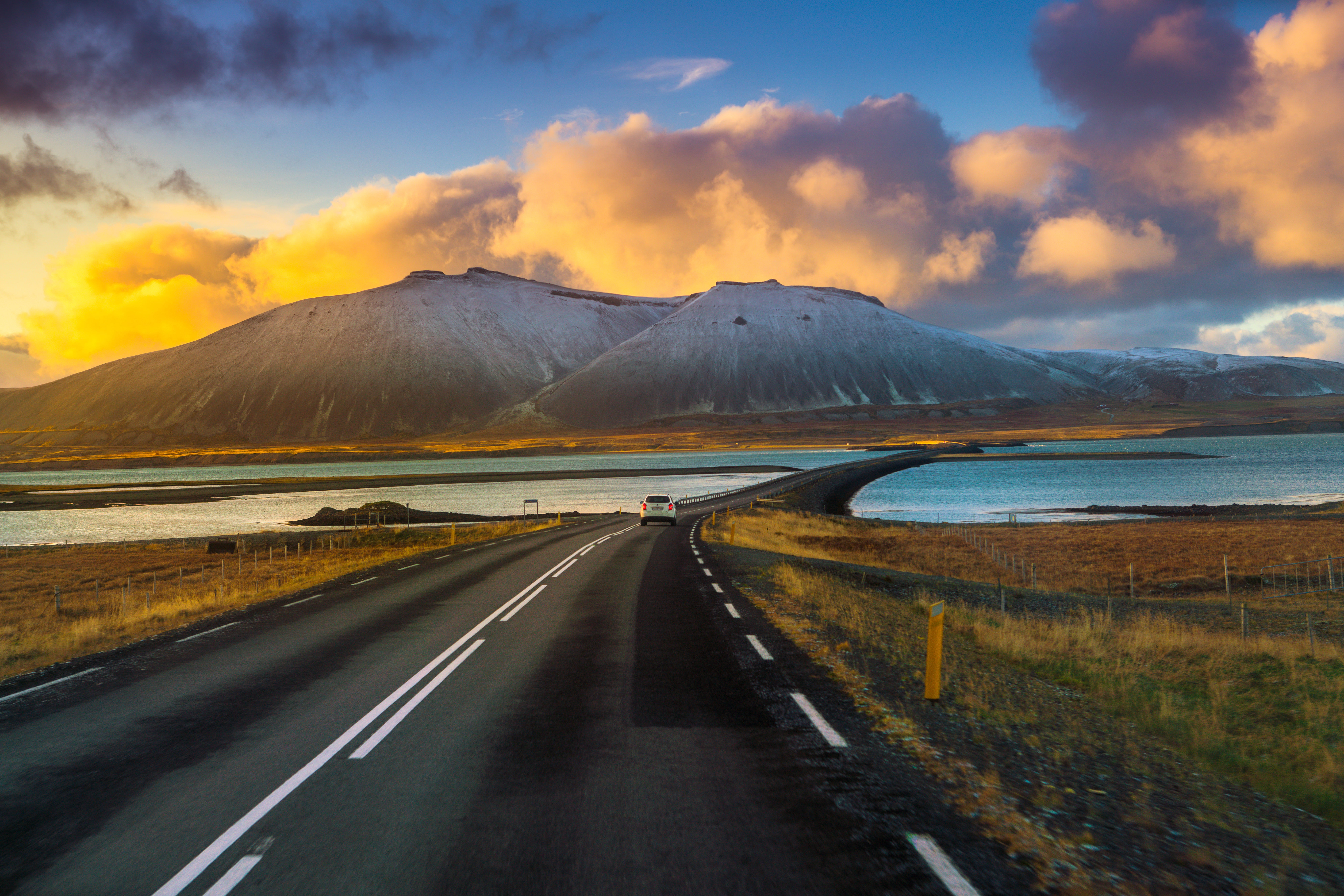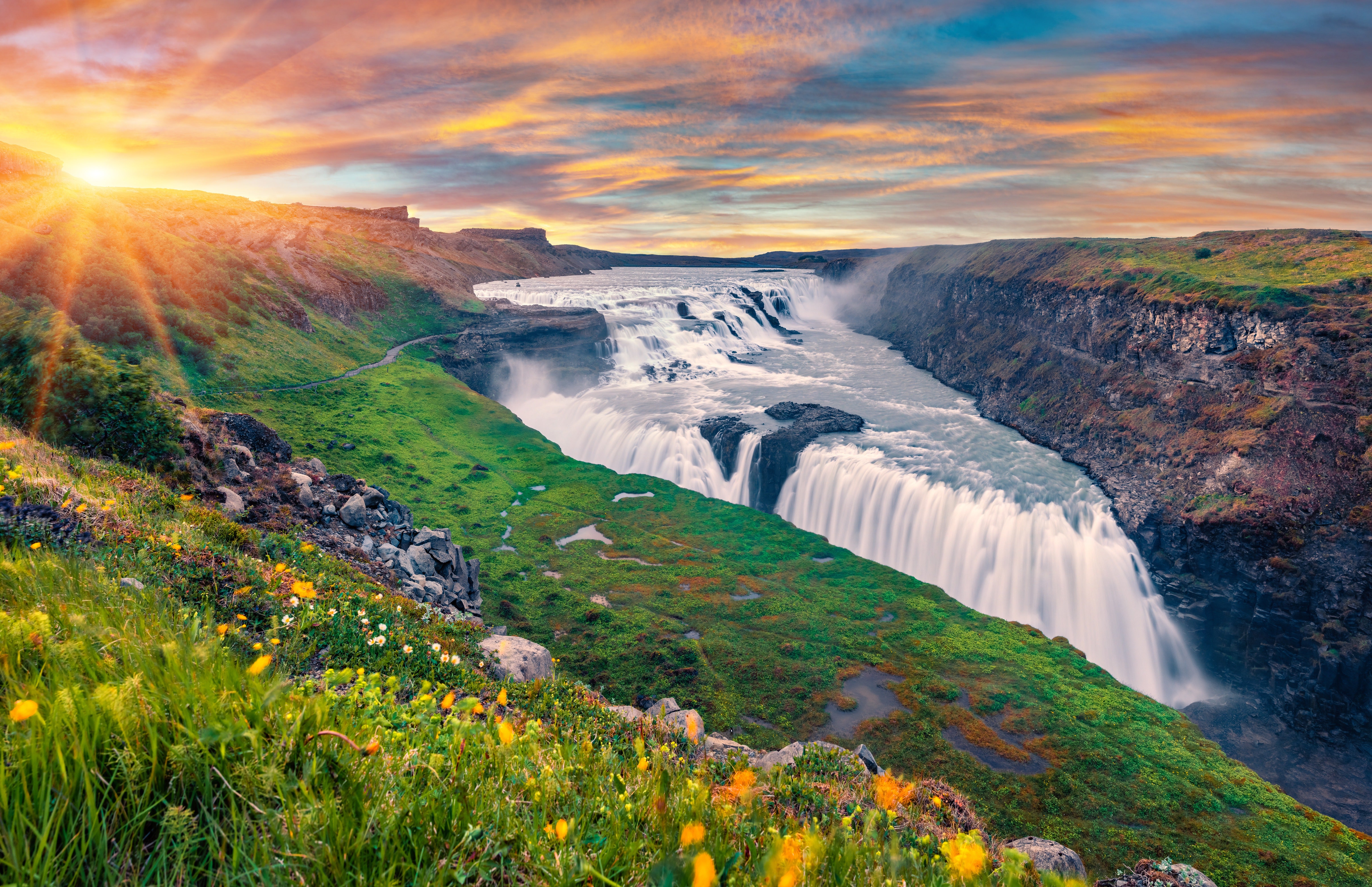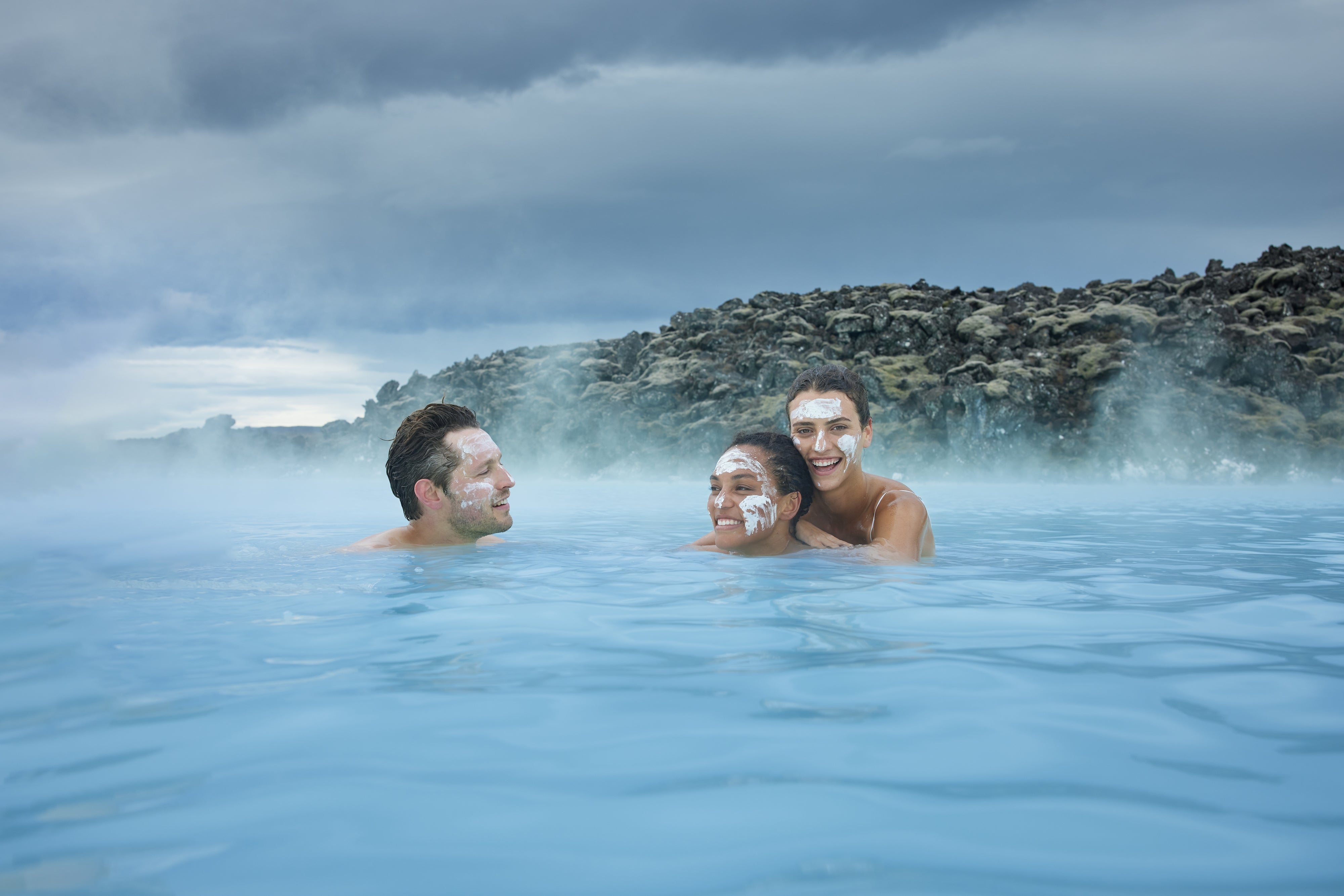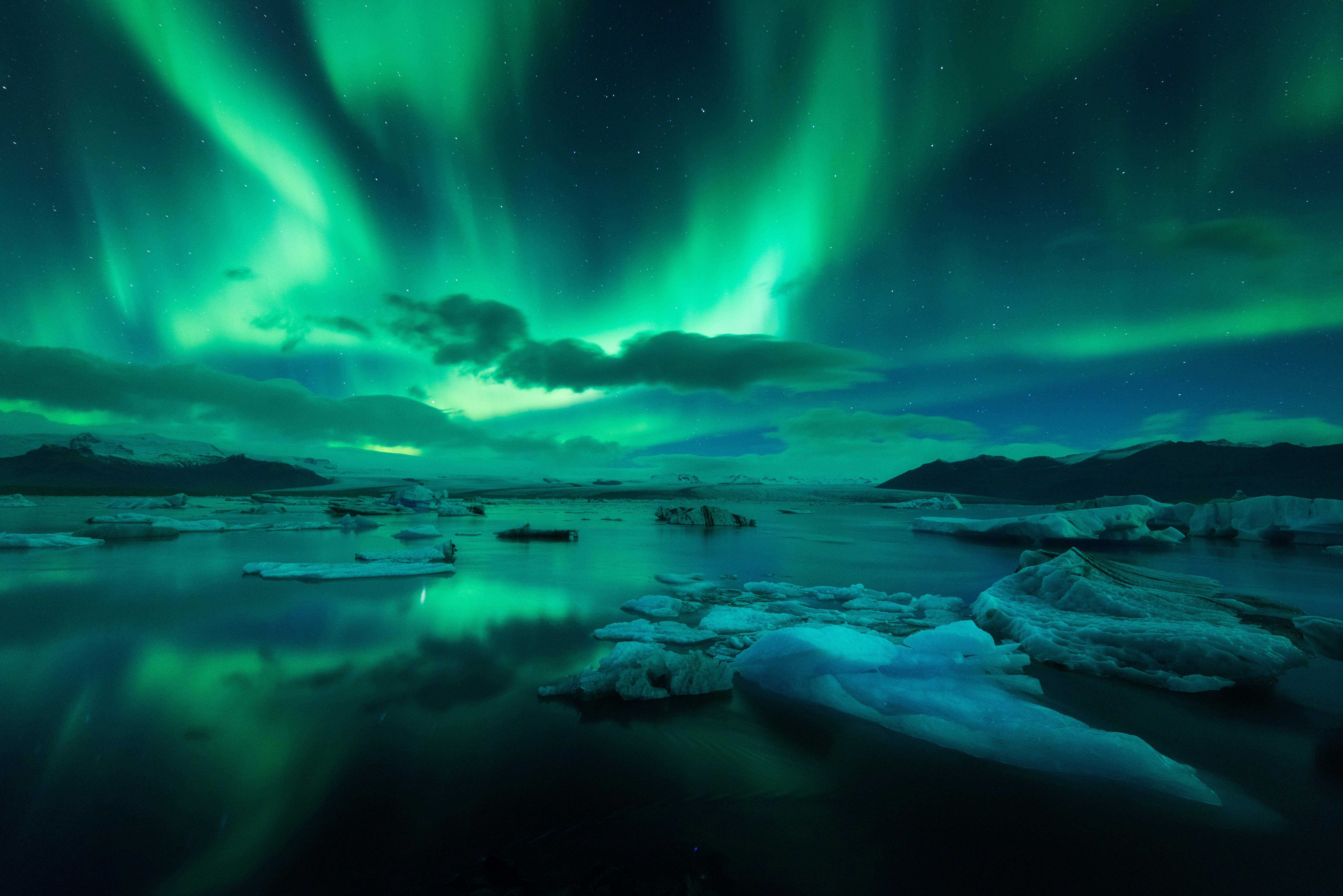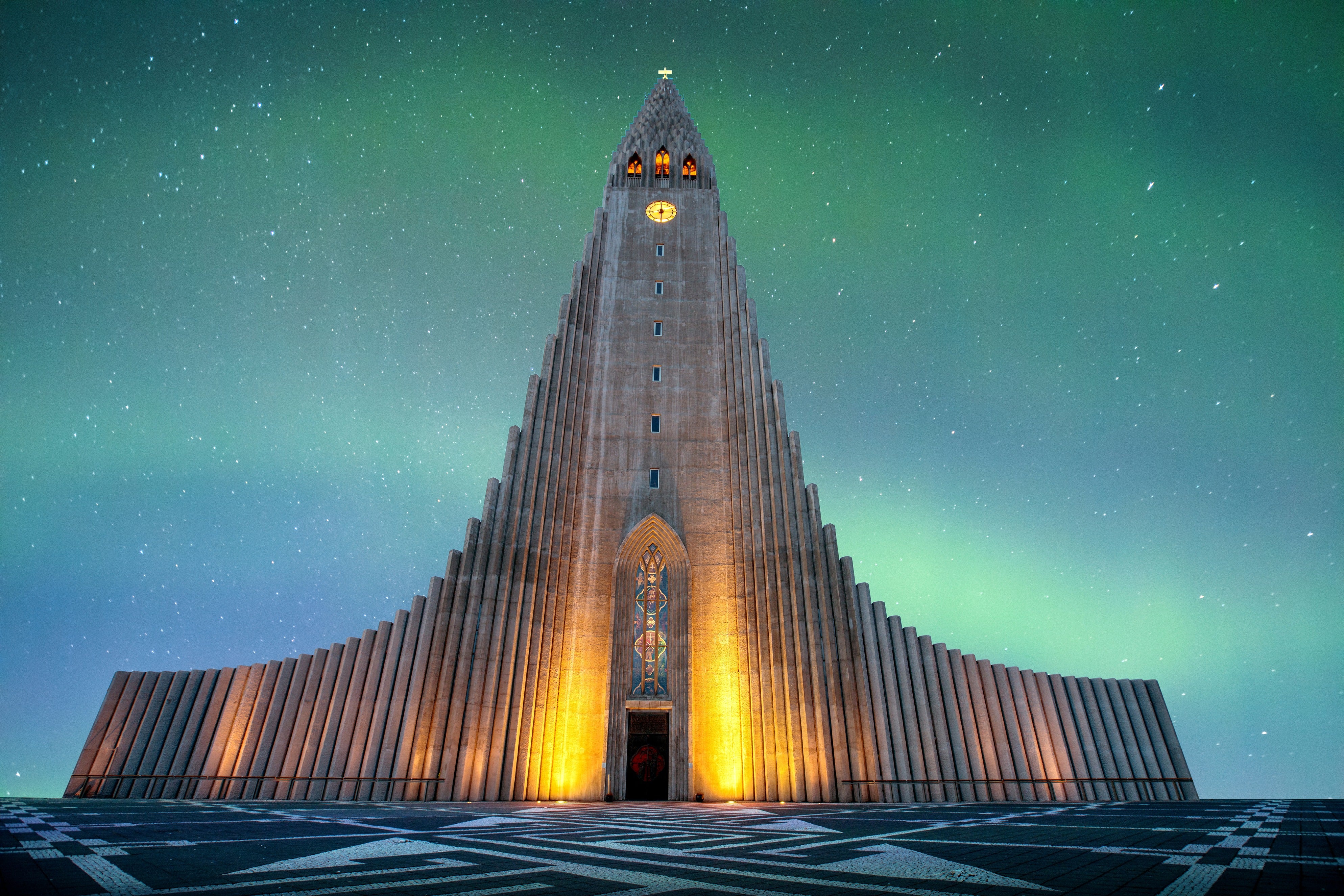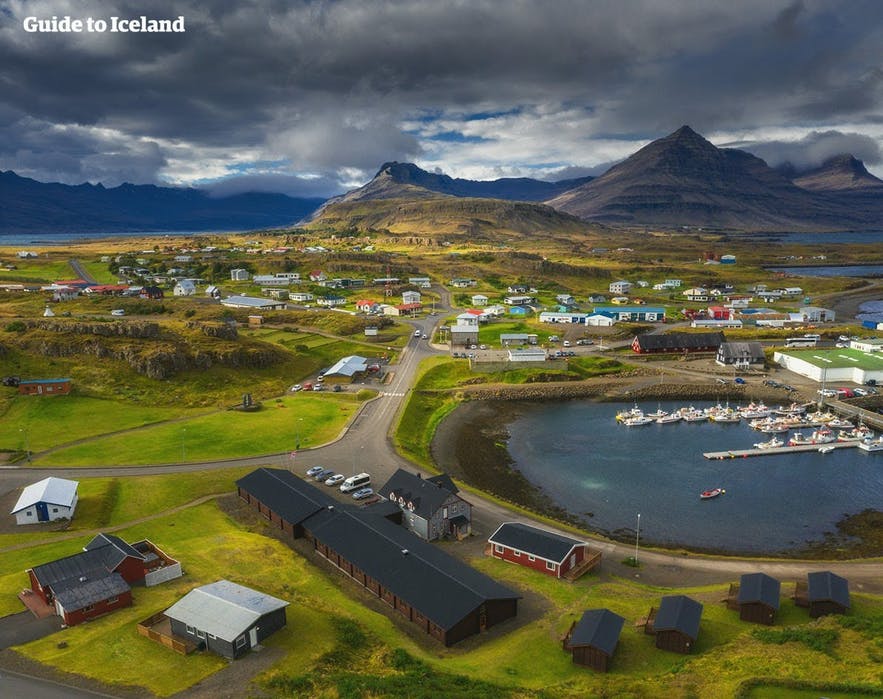
Fiordy Wschodnie Islandii to 120-kilometrowy odcinek wybrzeża od Berufjörður na południu do małej wioski rybackiej Borgarfjörður eystri na północy.
Z całkowitej populacji Islandii wynoszącej 335,000 osób, tylko około 3,2% mieszka na Fiordach Wschodnich. Lokalnie nazywany „Austurland” lub „Austfirðir”, całkowity obszar obejmuje 22,721 kilometrów kwadratowych. Poznaj ten region podczas wycieczki po Fiordach Wschodnich. Jeśli chcesz poświęcić trochę czasu na podróżowanie po tej okolicy, dobrym pomysłem jest zarezerwowanie hotelu na Fiordach Wschodnich, który posłuży Ci jako baza wypadowa do zwiedzania.
Dlaczego warto zaufać naszym treściom
Guide to Iceland to najbardziej zaufana platforma podróżnicza na Islandii, pomagająca milionom turystów każdego roku. Wszystkie nasze treści są pisane i recenzowane przez lokalnych ekspertów, którzy doskonale znają Islandię. Możesz polegać na nas, otrzymując dokładne, aktualne i wiarygodne porady podróżnicze.
Przyroda na Fiordach Wschodnich
Wschodnia Islandia ma wiele wąskich fiordów, otoczonych stromymi klifami. W większości z nich znajdują się wioski rybackie.
Fiordy Wschodnie, często pomijane przez odwiedzających, reprezentują to, co Islandia ma najlepszego do zaoferowania. Znajdują się tu fantastyczne krajobrazy, odległe wioski rybackie, lśniące jeziora, gęste lasy i tradycyjne farmy.
Region ten szczyci się najbardziej słoneczną pogodą w kraju, a także jednymi z najbardziej znanych i lubianych dzikich zwierząt na Islandii.
Dodatkowo słynie ze stad dzikich reniferów. Jest to jedyne miejsce w kraju, w którym żyją te zwierzęta. Początkowo były one sprowadzane w celach hodowlanych, ale to przedsięwzięcie nigdy nie było lukratywne i od tego czasu żyją na wolności.
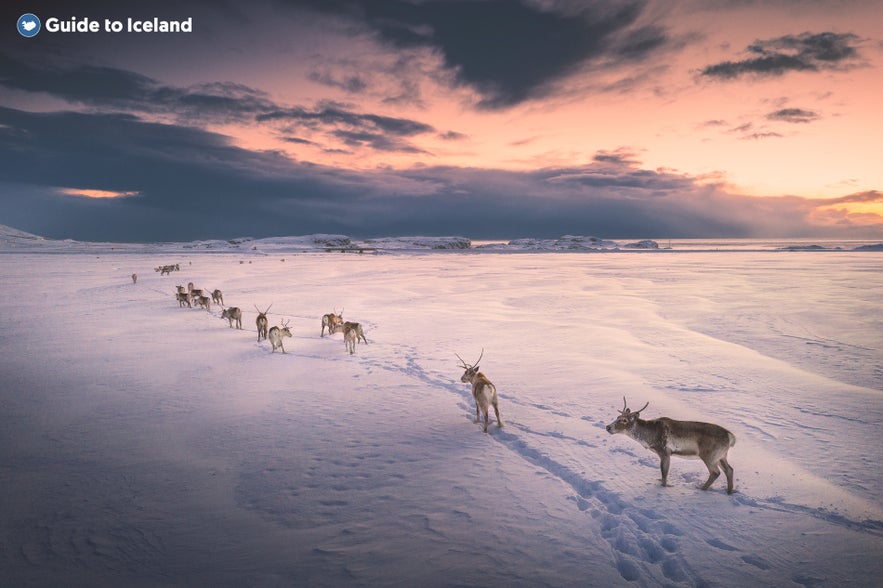
Ptaki wędrowne żyją zarówno w głębi lądu, jak i na klifach latem, włączając w to nieuchwytne maskonury.
Przez region przepływa wiele rzek, a przy ich ujściach zamieszkują kolonie fok. Urodzajne wody dostarczają również pożywienia wielorybom i delfinom, dzięki czemu są one widoczne nawet z brzegu.
Imponująca góra Snӕfell (nie należy jej mylić z półwyspem Snæfellsnes na zachodzie Islandii) jest najwyższym wolnostojącym szczytem Islandii i leży na wschodzie. W pobliżu znajduje się oaza górska Eyjabakkar, jedno z najważniejszych na świecie miejsc lęgowych gęsi krótkodziobej.
Vatnajökull, największy lodowiec w Europie, rozciąga się do granic wschodniej Islandii i jest tak duży, że widać go z wielu miejsc w całym regionie.
Zapierające dech w piersiach wybrzeża i obietnica spokojnego odosobnienia również przyciągają turystów do wschodniej Islandii. Będzie to idealny przystanek podczas podróży obwodnicą.

Fiordy Wschodnie Islandii mają wiele do zaoferowania. Jeśli lubisz przyjemne spacery na łonie natury, Borgarfjörður eystri jest rajem dla wędrowców. Według lokalnych opowieści obszar ten jest zamieszkiwany przez elfy i islandzkich „ukrytych ludzi”.
W kanionie Studlagil znajdują się również niesamowite bazaltowe formacje skalne. Chociaż dotarcie do kanionu wymaga wędrówki, jest to naprawdę zadziwiające miejsce zarówno dla geologów, jak i miłośników przyrody.
Na wschodzie Islandii znajdują się także piękne wodospady, takie jak Litlanesfoss i Hengifoss.
Egilsstaðir
Wschodnia Islandia ma tylko kilka miast z niezbędnymi usługami. Głównym z nich, uważanym za stolicę regionu, jest Egilsstaðir.
W Egilsstaðir znajdują się restauracje, muzea, sklepy, stacje benzynowe i szereg opcji zakwaterowania na każdą kieszeń. Znajduje się tu również lotnisko, co oznacza, że osoby z ograniczonym czasem lub bez prawa jazdy mogą łatwo dotrzeć do niego z Reykjaviku.
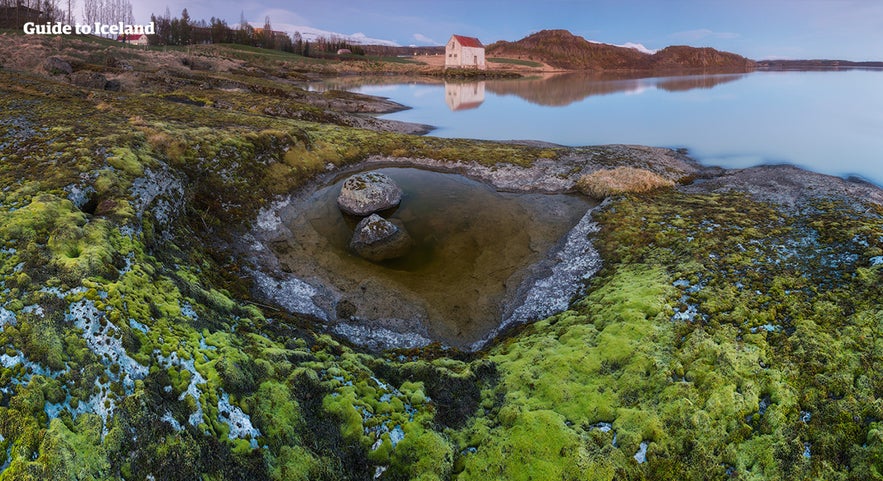
To małe, idylliczne miasteczko na wschodzie Islandii jest znane z wielu powodów. Najpopularniejsze atrakcje w pobliżu Egilsstadir obejmują piesze wycieczki, wizytę na basenie lub w spa (szczególnie wyjątkowe jest Vok Baths), odwiedzanie wodospadów i zwiedzanie malowniczego miasteczka. Znajduje się tu również słynne Muzeum Dziedzictwa. Daje ono odwiedzającym wgląd w życie mieszkańców wschodniej Islandii w minionych czasach.
Obszar ten jest pełen fantastycznych atrakcji, takich jak Hallormsstaðaskógur, największy las w kraju. Można go znaleźć na wschodnim brzegu jeziora Lagarfljót. Przyjrzyj się uważnie jezioru, a być może dostrzeżesz w wodzie potwora.
Hallormsstaðaskógur zajmuje powierzchnię 740 hektarów. Składa się z ponad osiemdziesięciu różnych gatunków drzew z całego świata. Tempo jego rozrastania się jest zdumiewające, biorąc pod uwagę, że w 1910 roku była to tylko niewielka liczba drzew na chronionym terenie.
W Egilsstaðir odbywa się także coroczny festiwal muzyki elektronicznej Hringrás, festiwal Orsteiti Town oraz festiwal jazzowy.
Jeśli szukasz czegoś bardziej relaksującego, możesz również wziąć kojącą kąpiel w basenie w Selárlaug, niedaleko Bakkafjörður. Basen jest otoczony górami i pięknymi widokami na fiord i ma opinię jednego z najbardziej autentycznych doświadczeń dostępnych w regionie.
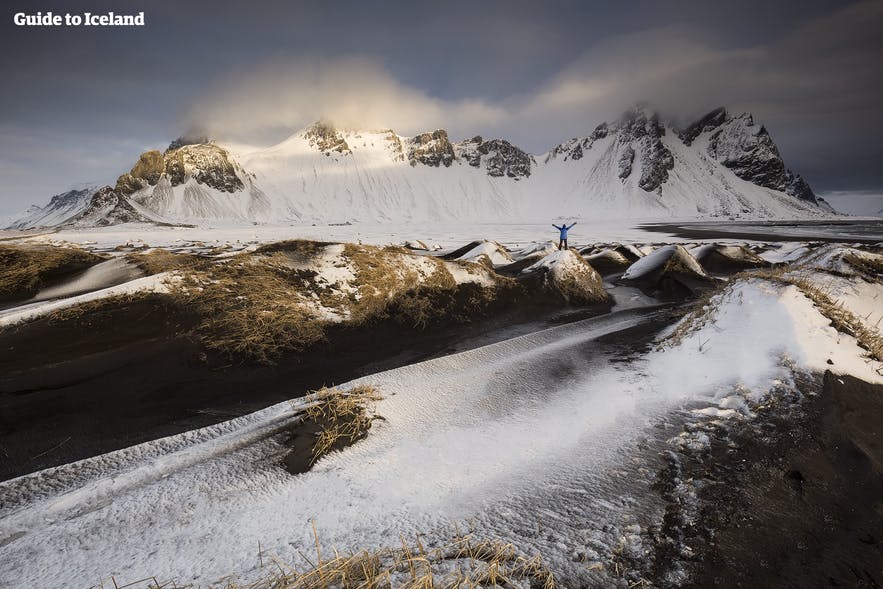
Podczas zimy na Fiordach Wschodnich będziesz mieć doskonałą okazję, aby zobaczyć zorzę polarną z tak odległych miejsc, jak Egilsstaðir, oczywiście przy sprzyjającej pogodzie.
Seyðisfjörður
Osoby odwiedzające Islandię promem z Europy kontynentalnej lub Wysp Owczych zawiną do portu w Seyðisfjörður. Miasto ma niewielką populację 700 osób. Słynie z ozdobnej drewnianej architektury, wpływów skandynawskich i dawnego przemysłu połowu śledzi. Znaczna część drewna użytego do budowy Seyðisfjörður została wysłana przez Norwegię w stanie gotowym w XVIII wieku.
W centrum miasta znajduje się pomalowana na tęczowo ulica, która prowadzi do słynnego niebieskiego kościoła.
Seyðisfjörður otoczone jest wodospadami, płaskimi górami i spokojnymi szlakami turystycznymi, uzupełnionymi wspaniałymi panoramami na sąsiedni fiord.
Inne atrakcje dostępne z lub w pobliżu Seyðisfjörður obejmują nurkowanie, narciarstwo, wędkarstwo morskie, paralotniarstwo i jazdę konną. Istnieje również kilka wystaw o tematyce kulturalnej do odwiedzenia. Należą do nich Muzeum Elektrowni Fjarðarsel i Centrum Sztuk Wizualnych Skaftfell.
Fáskrúðsfjörður
Fáskrúðsfjörður to wioska licząca zaledwie 700 mieszkańców. Położona jest w samym sercu Fiordów Wschodnich i ma bardzo odrębną kulturę.
Pierwszymi osadnikami byli francuscy rybacy, a ich dziedzictwo jest wciąż żywe w tym małym miasteczku. Po raz pierwszy przybyli tu w połowie XIX wieku. Francuzi zbudowali domy, szpital i port, które uznali za wszystko, czego potrzebowali podczas pobytu na Islandii.
Zadomowili się w tej małej nadmorskiej wiosce. Jednak podczas I wojny światowej wielu Francuzów zostało powołanych do służby w obronie Francji. Miasto wkrótce opustoszało z mężczyzn. Jednak ich dziedzictwo żyje nadal.
Można odwiedzić francuski szpital, gdzie znajduje się pełna historia tych francuskich osadników. Został on niedawno odnowiony i pełni funkcję hotelu i muzeum.
Jako ukłon w stronę ojców założycieli wioski, miasto nadal posiada znaki zarówno w języku islandzkim, jak i francuskim. Jest również powiązane z miastem we Francji o nazwie Gravelines.
Każdego roku odbywają się tam dwie imprezy, aby uczcić ich związek z Islandią. Pierwsza z nich jest organizowana wiosną, kiedy rybacy wyruszają na połów do Islandii. Druga odbywa się jesienią, gdy ci ludzie wracają do francuskich wybrzeży.
W Fáskrúðsfjörður miasto świętuje swoje francuskie powiązania w szczycie lata. Lipiec to szczyt sezonu wędkarskiego, więc obchody zwykle zbiegają się z tym okresem.
Wędkarze odwiedzający okolicę mogą łowić ryby w pobliskiej rzece Dalsá.
Warto również wybrać się na wędrówkę ścieżką wzdłuż rzeki Gilsá w kierunku wodospadu Gilsárfoss, gdzie można spacerować za kaskadami wody.
Breiðdalsvík
Breiddalsvik znajduje się na południe od Fáskrúðsfjörður. Jest to mała wioska zamieszkana przez zaledwie 140 osób. Miejsce to stanowi doskonałą lokalizację dla miłośników pieszych wędrówek i jest świetnym miejscem do wypatrywania dzikich reniferów, które często można spotkać wędrujące w pobliżu.
Odwiedzający mogą również podziwiać czarną piaszczystą plażę w Breiddalsviku. Istnieje także możliwość wybrania się na wycieczkę do najdłuższej i najszerszej doliny na Islandii, Breiðdalur.
Wyspa Papey
Papey to niezamieszkana wyspa położona u wschodniego wybrzeża Islandii. Jej powierzchnia wynosi około 2 kilometrów kwadratowych. Najwyższy punkt mierzy 58 metrów nad poziomem morza. Wycieczki łodzią na Papey odbywają się każdego lata z Djúpivogur.
Nazwa wyspy pochodzi od gaelickich mnichów. Uważa się, że mnisi zamieszkiwali wyspę na długo przed osiedleniem się na niej Norwegów. Papey była zamieszkiwana od X wieku do 1966 roku, kiedy to mieszkańcy wyspy ostatecznie przenieśli się na stały ląd.
Przez stulecia mieszkańcy Papey utrzymywali się z połowów rekinów, polowań na foki i maskonury oraz prowadzenia gospodarstw rolnych. W późniejszych latach mieszkańcy zbierali również puch z kaczek edredonów żyjących na wyspie.
Dziś odwiedzający Papey mogą podziwiać duże kolonie maskonurów, które wciąż żyją na wyspie. Warto również zobaczyć pozostałości dawnej osady, w tym latarnię morską, kościół i stację meteorologiczną. Wszystkie one nadal istnieją w takim samym stanie jak w 1966 roku.
Kultura wschodniej Islandii
Jednym z centralnych punktów kultury na wschodzie jest kulturalne i historyczne centrum Skriðuklaustur w rejonie Fljótsdalshérað. W średniowieczu w tym miejscu stał klasztor. Od tego czasu obiekt ten stał się centrum religijnym regionu. W XX wieku islandzki pisarz Gunnar Gunnarsson stworzył tu swój dom.
Gunnar napisał wiele dzieł, takich jak Aðventa („Dobry Pasterz”), Svartfugl („Czarne Ptaki”) i Saga Borgaraettarinnar („Saga o Jednookim Gościu”). Napisał także autobiograficzną powieść Fjallkirkjan, która po przetłumaczeniu otrzymała wiele różnych tytułów, w tym „Kościół na górze”, „Statki na niebie” oraz „Noc i sen”.
Festiwale odgrywają dziś znaczącą rolę w kulturze wschodniej Islandii. Seyðisfjörður jest gospodarzem corocznego festiwalu muzycznego LungA, a miejscowość Neskaupsstaður jest gospodarzem dwóch bardzo popularnych corocznych festiwali, Neistaflug i Eistnaflug.
We wschodniej Islandii znajduje się również elektrownia wodna Kárahnjúkar, która dostarcza energię do wielu miast. Jej budowa doprowadziła do gorącej debaty na temat wpływu na środowisko naturalne Islandii. Debata ta trwa do dziś.
